Why Dahlias Are The Ultimate Flowers For the Cutting Garden
I’ve been growing dahlias for years. As an avid cut flower gardener, whether for business or for my own personal use, dahlias really can’t be beat by any other flower. They come in an incredible variety of shapes, sizes, and colours to suit any mood or occasion or design (the varieties are so endless that cohesive designs can be created entirely with dahlias); but the chief reason I can’t live without them is that the more flowers I cut, the more flowers they produce. Unlike with peonies or tulips or even foxgloves, I never have to feel guilty about bringing some dahlia blooms indoors or giving a bouquet to a friend; because I know that cutting the stem will simply signal the plant to send up more flowers. And unlike other summer cut-and-come-again fan-favourites like zinnias and sunflowers; dahlias have a lush upscale vibe in designs.
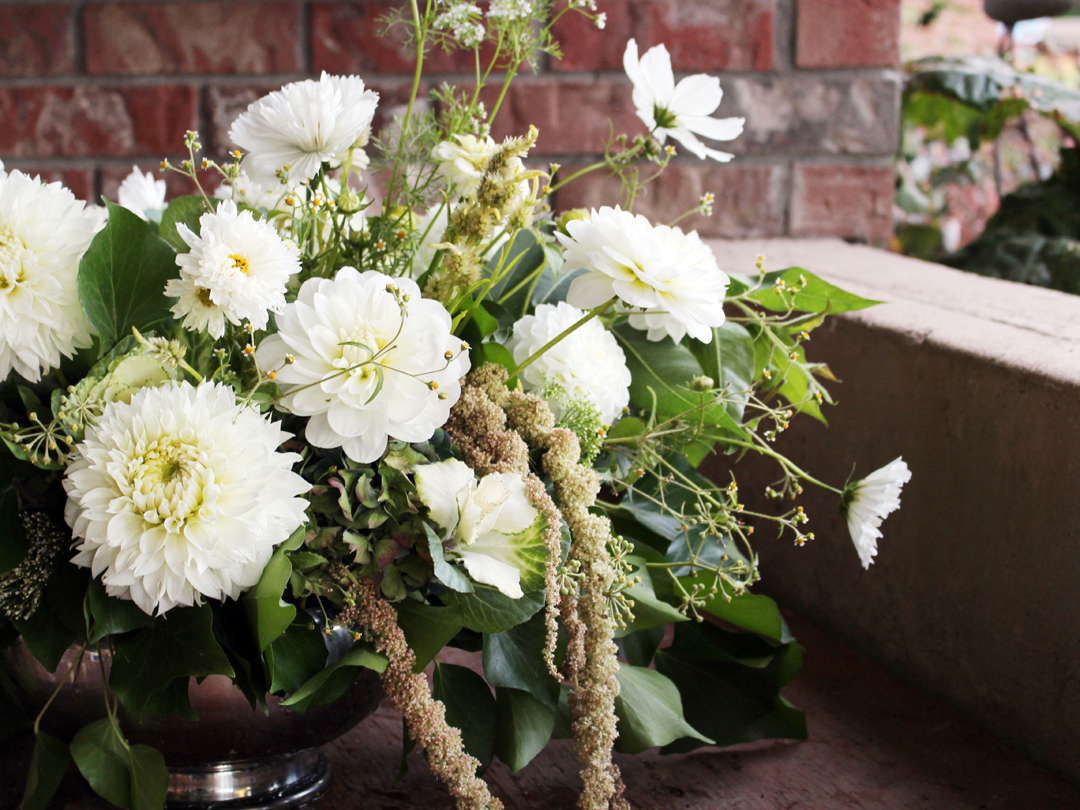
Lush garden-style all white compote featuring white dahlias (Gitt’s Attention) and other seasonal garden flowers including amaranthus, cosmos, trachelium, and hydrangea in a vintage silver footed bowl.
Why Dahlias Can Be Tricky To Master
Very simply, dahlias like to be planted when it is warm and not too wet and likewise, stored where above freezing (but not too warm) and not too wet or dry. Despite this, many people struggle with storing and growing dahlias; and I think this is because how you need to treat them really depends on your own specific climate conditions. What you need to do to maintain the appropriate temperatures and humidity for your dahlias may be different from someone in a different area, or even from your neighbour! Have you ever tried a storage method because someone else swears by it; but it had disastrous results for you? The specificity of dahlias to their microclimate has resulted in a myriad of different methods which causes a lot of confusion (and frustration); but if you can persevere until you find the method that works best for you, you’ll be rewarded by glistening and vibrant blooms all season long.
In this blog article, I primarily want to answer the question, “When can I plant my dahlias?” Given the particular requirements of dahlias, I’ll touch on general information that can be applied more broadly, as well as what I specifically do in my own area of southern British Columbia, Canada – a region that experiences mild and humid conditions.
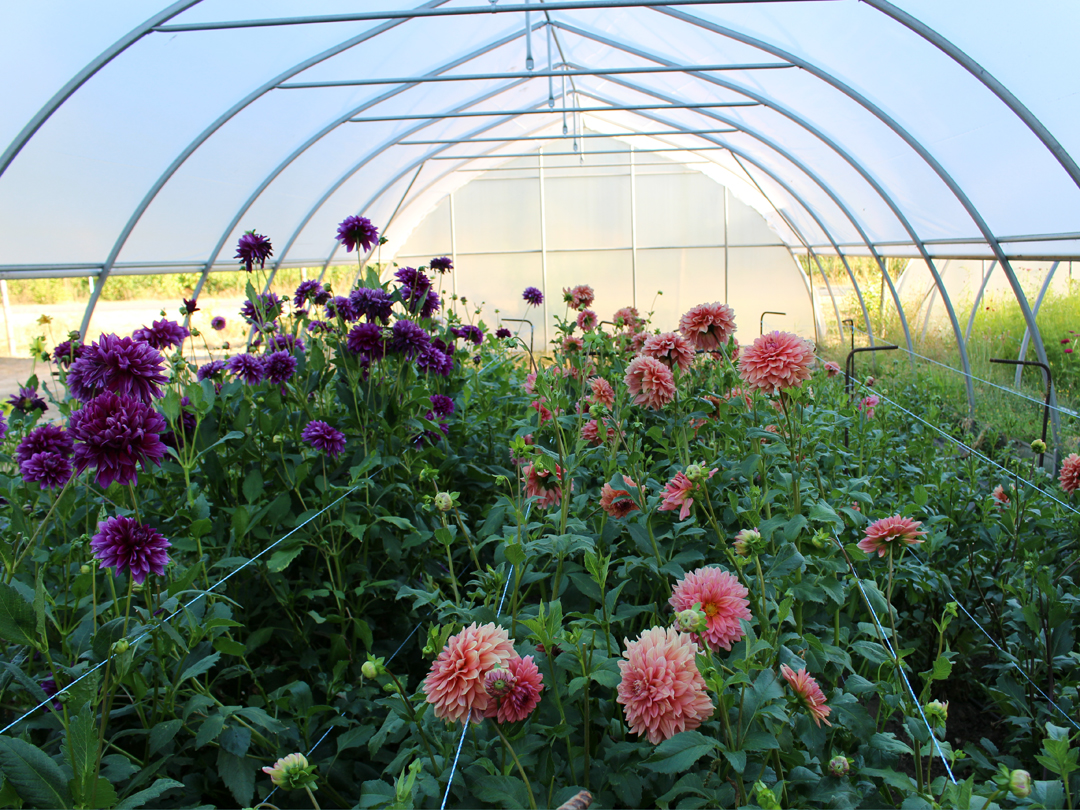
Dahlias growing in my hoophouse in Langley, British Columbia, Canada where temperate and wet climate conditions bring challenges to growing and storing dahlias.
When Is The Best Time To Plant Dahlia Tubers?
The best time to plant dahlia tubers is in the spring, after your last frost when soil has warmed up to about 15.5 degrees Celsius. In most areas in North America, this will be from April through June. If you live in a warmer climate, you may be able to plant them earlier. It’s important to wait until after the last frost as dahlias are sensitive to cold temperatures and frost can damage or kill them. It is also important to wait until it is not too wet as they can rot in the ground. It is common to purchase or recieve your shipment of tubers earlier than your optimal planting date. If its too early for you to plant, keep your tubers someplace cool until planting time. Another option is to begin the process of “waking up” your tubers. As with all things dahlias, there are various ways to do this. Below, I’ll share my own methods for approaching dahlia planting season.
What I Do
In the rainy west coast of southern British Columbia (neighbouring the Pacific Northwest, USA), I like to plant my field dahlias at last frost (which for me is April 15th). However, I find the best success with planting this early is to wait until I see tubers eyeing up or sprouting before they go in the ground. Of course, they won’t be as likely to begin sprouting when they are in cold storage; so in order to make sure they are ready for planting, I like to “wake up” my dahlia tubers before I plant them.
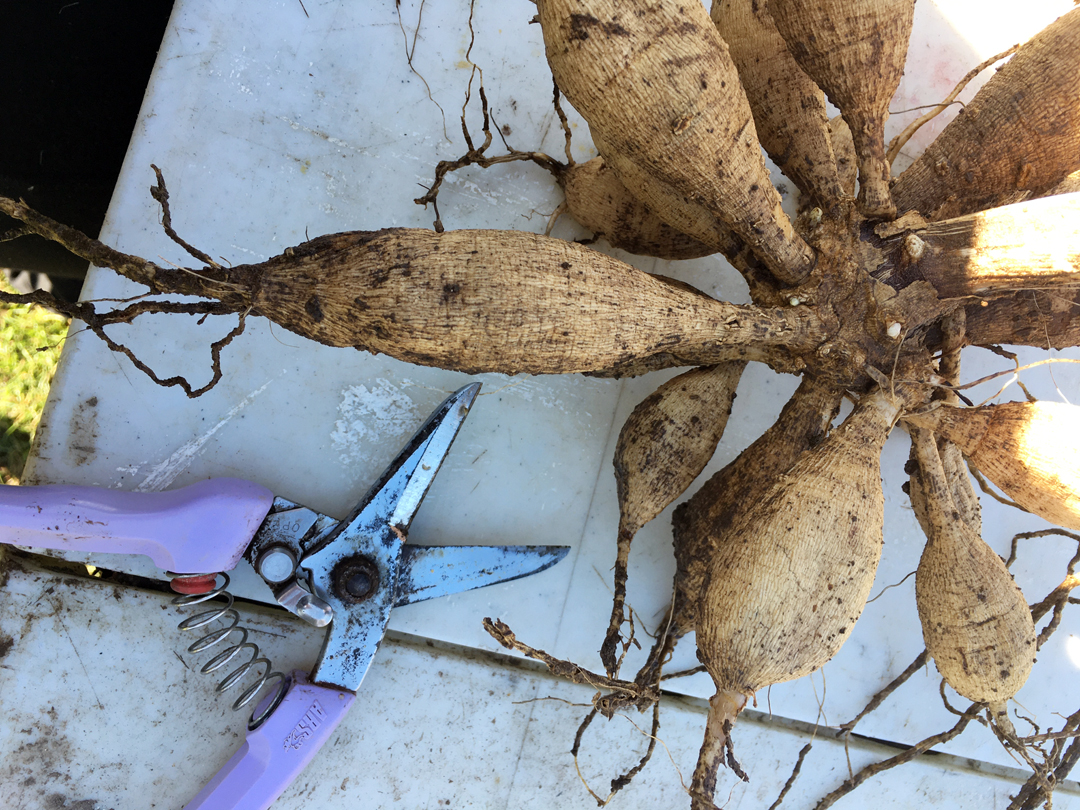
Dahlia tuber clump showing eyes beginning to sprout after being removed from storage and kept in a warm place.
How To Wake Up Dahlia Tubers Before Planting
One trick I’ve found to help me get ahead of our cool springs here in the temperate coastal rainforest climate of south coast British Columbia is that I can bring tubers out of storage weeks before I want to plant them and cause them to begin growing much earlier in the season. Bringing them into a warmer space signals them to “wake up” and begin sprouting. By the time I plant my tubers, they’ve been given a head start and will grow and flower sooner.
Waking Tubers Up For Planting Outdoors
If like me, you want to get an earlier start on flowering, you can wake up your dahlia tubers by starting them indoors about 4-6 weeks before the last frost. To do this, remove the tubers from storage (if you stored them over the winter) and bring them in to a warm space. The optimal temperature for this is 21 degrees Celsius; but generally the warmth of your home will be enough to encourage them to begin growing.
Depending on how the tubers were stored (or shipped to you), you may need to place them in a container or bag with a minimal source of moisture; be it slightly moist potting soil or a moist cotton swab or other material to ensure they don’t dry out too much. Its important to realize that it is the temperature that will signal the tubers to begin eyeing up, not the moisture. Planting them in soil or other medium will encourage the growth of roots, which isn’t necessary if you just wish to see some eyes or sprouts before you plant.
It can be tempting to add too much water, as you would a potted plant. At this stage, too much moisture will cause mold and lead to rot. Remember, tubers have everything they already need to power up some sprouts! Monitor your tubers to make sure they aren’t too moist (you’ll see mold or rot forming) or too dry (they’ll begin to wrinkle up as they desiccate). When you see sprouts forming on your clumps or tubers, you can plant them outdoors after last frost.
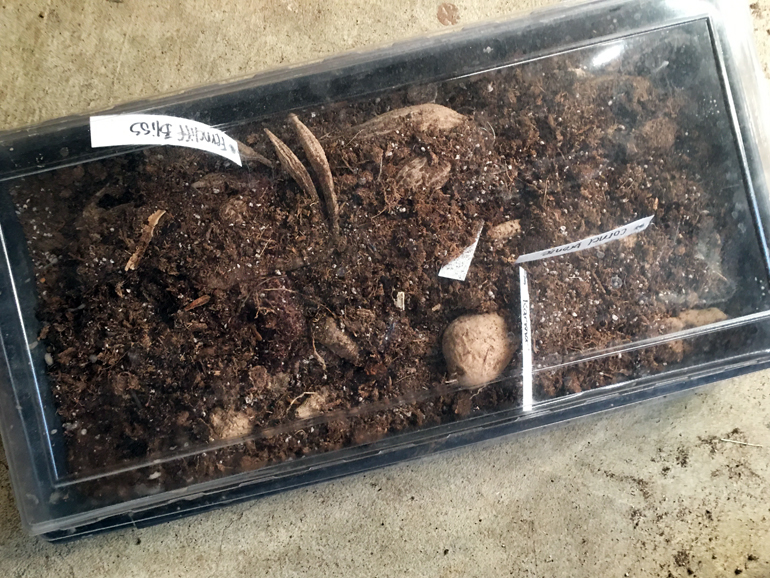
Tray system for waking up dahlia tubers in lightly damp peat moss. Tray is covered to control moisture – it can be vented if necessary to allow excess moisture to escape. Some dahia aficionados swear by using darkness to encourage tubers to sprout, rather than a clear lid or cover.
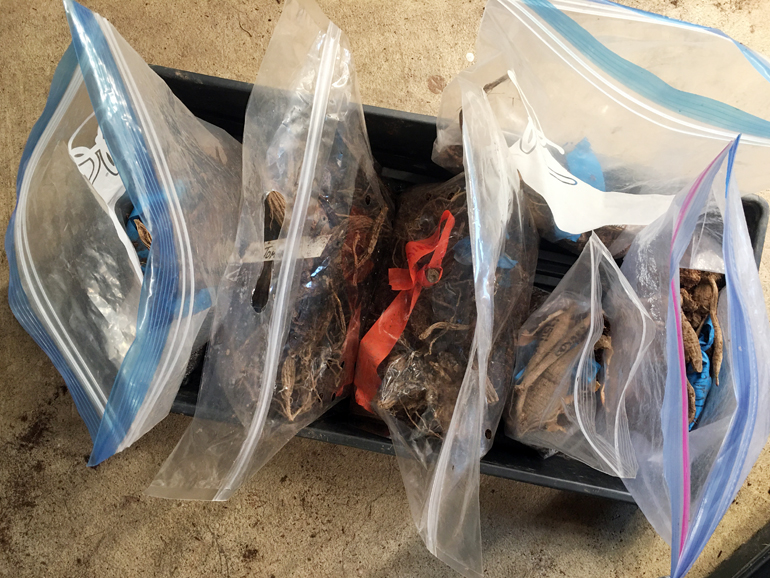
Bag system for waking up dahlia tubers. Tubers are settled in slightly moist peat moss and bags are vented to allow excess moisture to escape.
Waking Tubers Up For Planting An Established Plant
If you prefer to pot up your dahlia tubers and establish them more before planting them outdoors, you can wake them up about 6-8 weeks before the last frost. To do this, follow the process above; but instead of planting your tubers directly outdoors when you see sprouts forming, you can plant them in pots with soil and grow them under lights. This will encourage the tubers to start growing and producing strong, healthy plants and help you get ahead of the season.
What Are Your Dahlia Goals/Needs?
Through a similar process, you’ll often see dahlia growers waking up their tubers in order to take cuttings using the young sprouts. More on that in a future blog post! It’s important to realize there are a myriad of methods applied to dahlias and what you need to do will ultimately depend on your dahlia goals. When you see other people dividing or sprouting their dahlias, it doesn’t necessarily mean that you need to do it too!
Planting Location and Care
Plant your dahias in a sunny spot in your garden. Dahlias do best in fully sun; but in very warm areas they will benefit from morning sun and afternoon shade as they don’t tolerate high heat. If planting a single tuber, lay it on its side with the eye up (or, if you grow a lot of dahlias as I do, just toss them in the hole – they’ll figure it out!). Plant at a depth of 2 to 3 inches. Typically you won’t need to water the soil at this point unless the soil is extremely dry.
Plant after last frost when the soil is about 15.5 degrees Celsius. Dahlias prefer well-drained soil with a soil pH of 6.5 to 7.0; but I have grown dahlias successfully in clay soils. Sandier well-drained soils do have the added benefit of making lifting and cleaning your clumps in the fall a lot easier.
Begin watering your dahlias when you see growth above the soil. Dahlias do best with a deep watering two or three times per week. Dahlias are heavy-feeders. You can amend soil with compost at the time of planting. Fertilize with a low nitrogen fertilizer after you see growth and then monthly.
Conclusion
I hope this article has answered a few of your questions while also inspiring you to try growing dahlias for your cutting garden. For me, they are the flower I’ll always grow, no matter what. While dahlias can sometimes be known as divas, when treated right they’ll reward you with endless colour from late spring until the first hard frost.
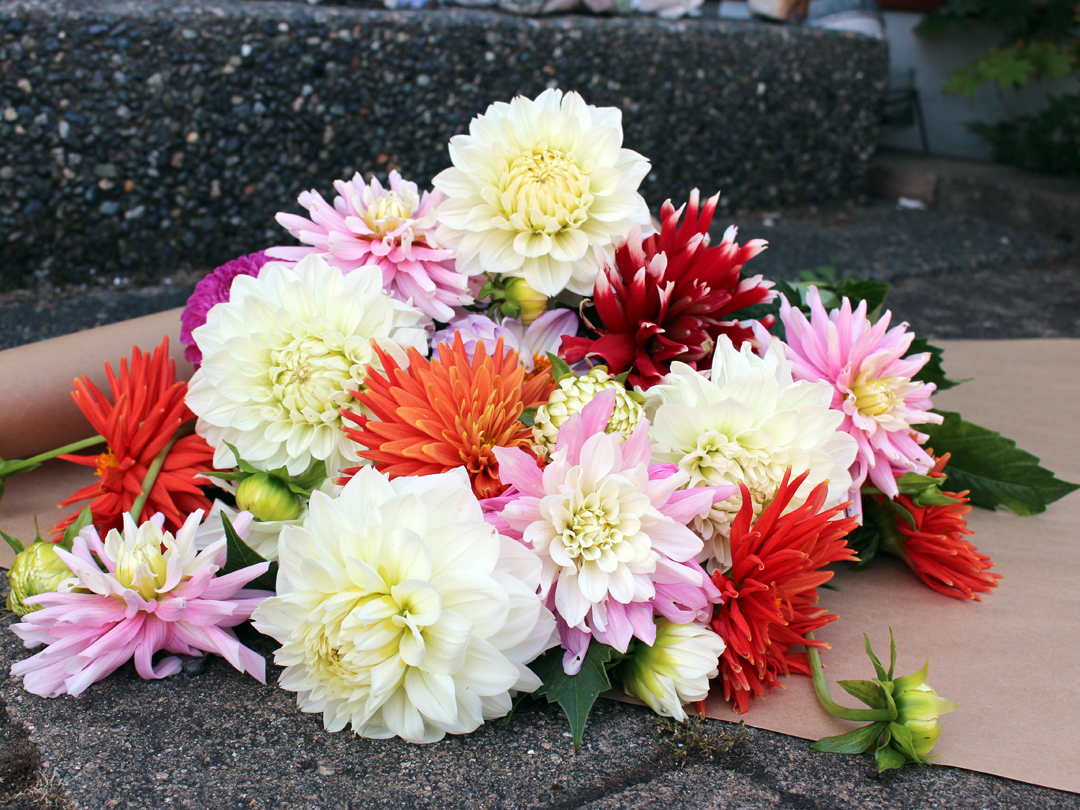

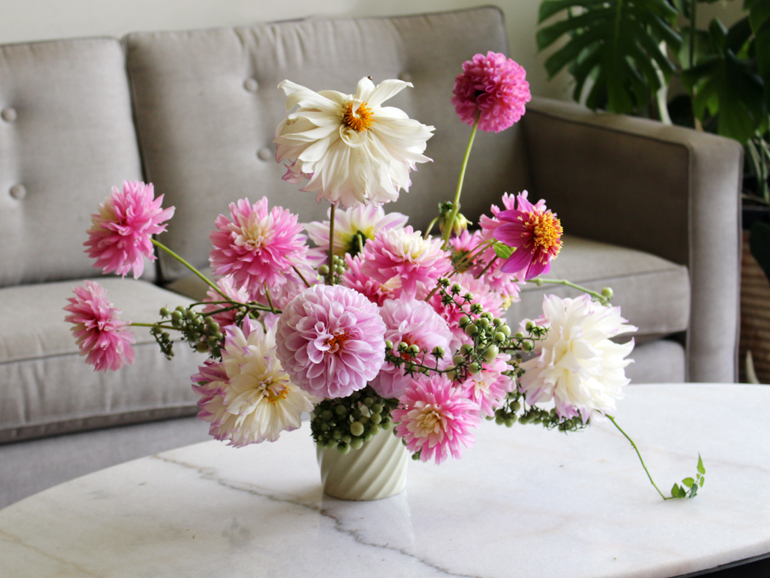
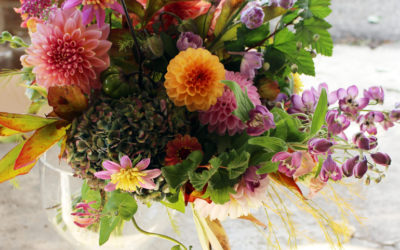
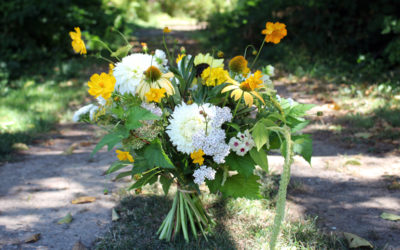
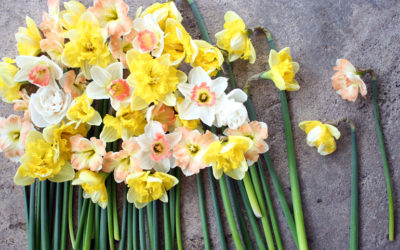
Excellent article! Thank you!